Lecture 30: Network Flow III
$ \def\opt{ {\mathrm{opt}} } \def\val{ {\mathrm{val}} } \def\capacity{ {\mathrm{cap}} } $
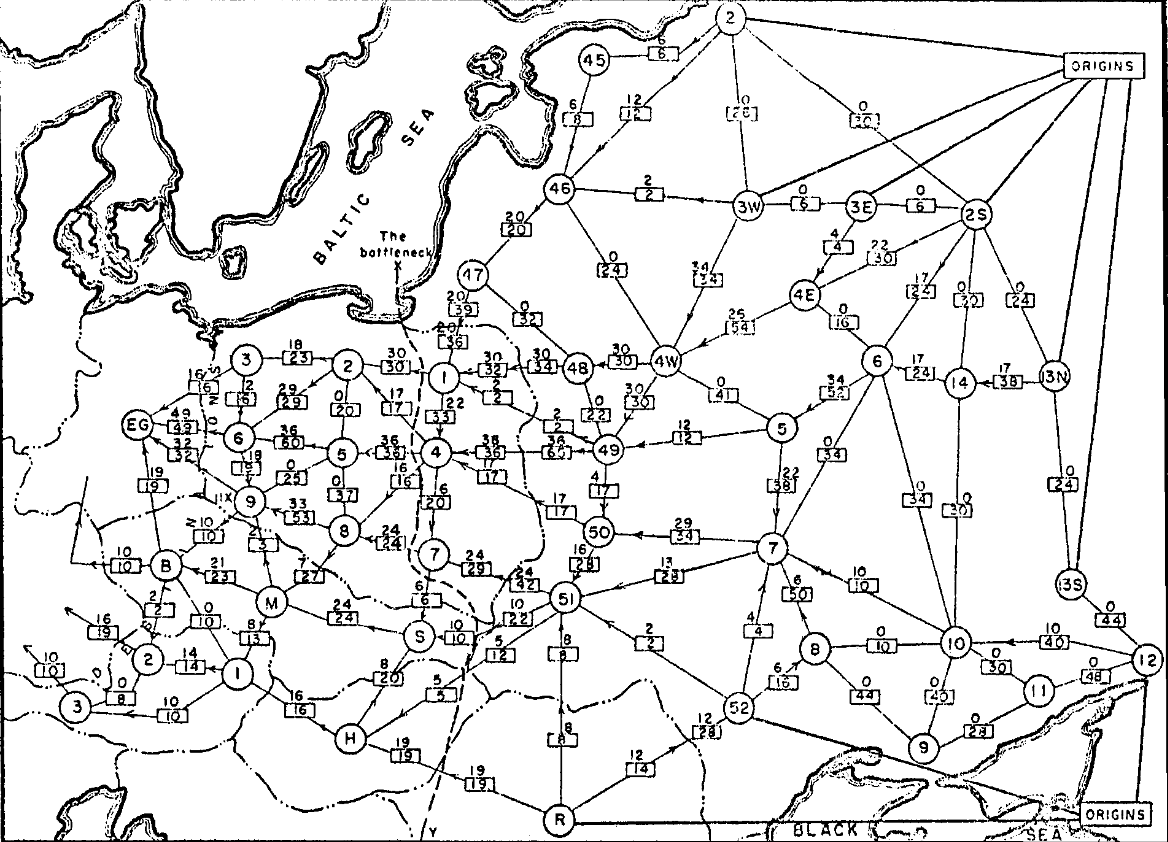
COSC 311 Algorithms, Fall 2022
Annoucement
Midterm II on Wednesday
- Practice solutions coming soon
Last Time
Max Flow Problem:
Input.
- weighted directed graph $G = (V, E)$
- weights = edge capacities $> 0$
- source $s$, sink $t$
- all edges oriented out of $s$
- all edges oriented into $t$
Output.
- flow $f$ of maximum value
- $\val(f) = \sum_{s \to v} f(s, v)$
We Showed
Greedy strategy doesn’t always work
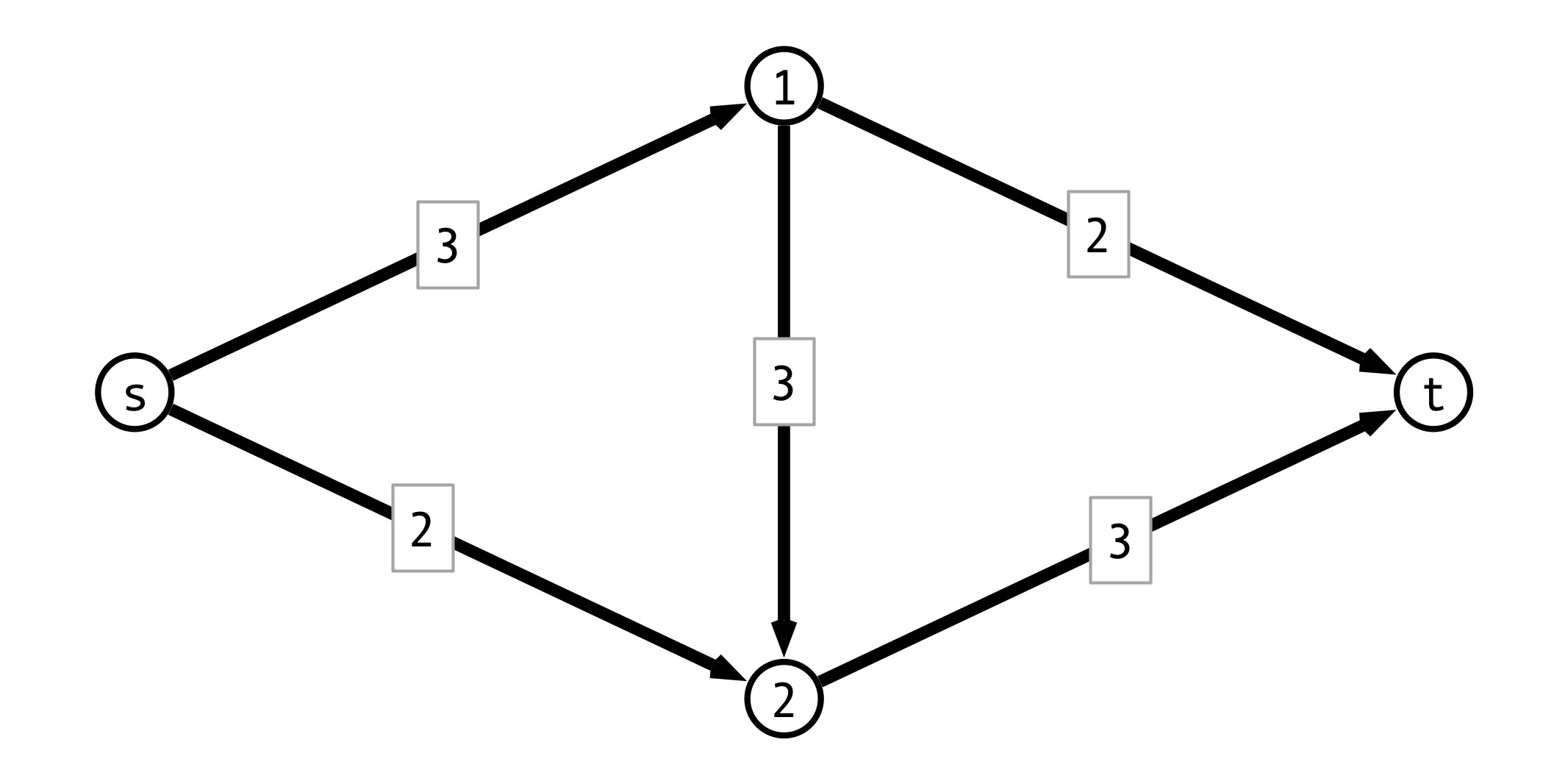
Ford-Fulkerson Idea
Given a flow $f$:
- allow forward flow to be “undone”
- when routing forward flow $f(u, v)$ across edge $(u, v)$, create backwards edge $(v, u)$ with capacity $f(u, v)$
- graph with backwards edges = residual graph
- backwards flow cancels out forward flow
Ford-Fulkerson Algorithm:
- apply greedy strategy to residual graph
- update residual graph with new flow
- continue until no unsaturated path from $s$ to $t$ remains
Ford-Fulkerson Example
Questions
How do we…
-
find augmenting path $P$ from $s$ to $t$?
-
update flow $f$ according to $P$?
-
update residual graph $G_f$?
Formalizing Ford-Fulkerson
MaxFlow(G, s, t):
Gf <- G
f <- zero flow
P <- FindPath(Gf, s, t)
while P is not null do:
b <- min capacity of any edge in P
Augment(Gf, f, P, b)
P <- FindPath(Gf, s, t)
endwhile
return f
Augment Procedure
Augment(Gf, f, P, b):
for each edge (u, v) in P
if (u, v) is forward edge then
f(u, v) <- f(u, v) + b
c(u, v) <- c(u, v) - b
c(v, u) <- c(v, u) + b
else
f(v, u) <- f(v, u) - b
c(v, u) <- c(v, u) + b
c(u, v) <- c(u, v) - b
Running Time
Assume:
- all capacities are integers
- $C = $ sum of capacites of edges out of $s$
Observe:
-
How long to find augmenting path $P$?
-
How long to run
Augment? -
How many iteraions of find/augment?
Conclude: Overall running time?
Optimality of Flow?
Question. How do we know this flow is optimal?
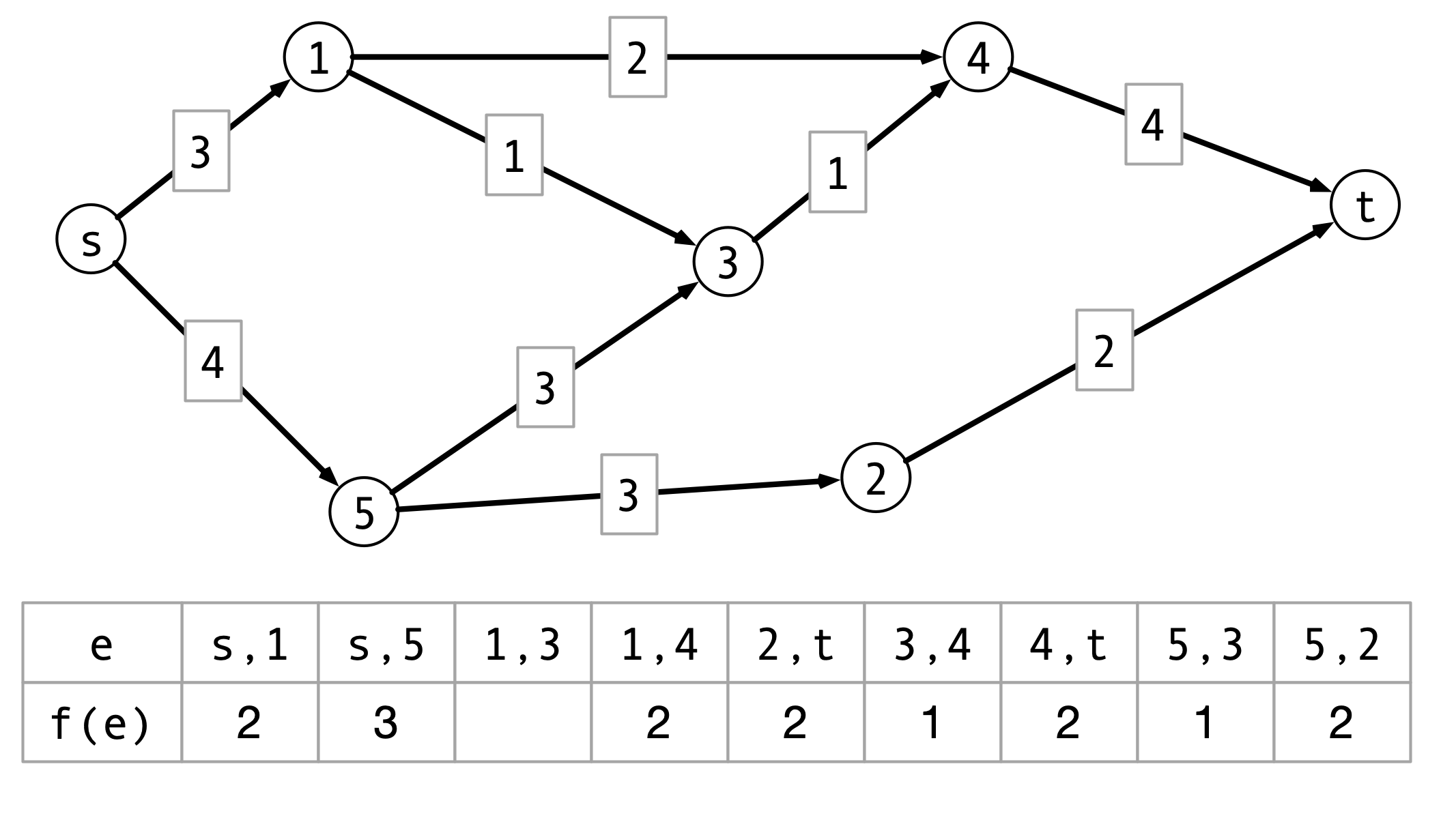
Cuts
Definition. An $s$ - $t$ cut $(A, B)$ is a partition of vertices into two disjoint sets with $s$ in $A$ and $t$ in $B$.
The capacity of $(A, B)$, denoted $\capacity(A, B)$ is the sum of the capacities of the edges out of $A$.
Cut Example
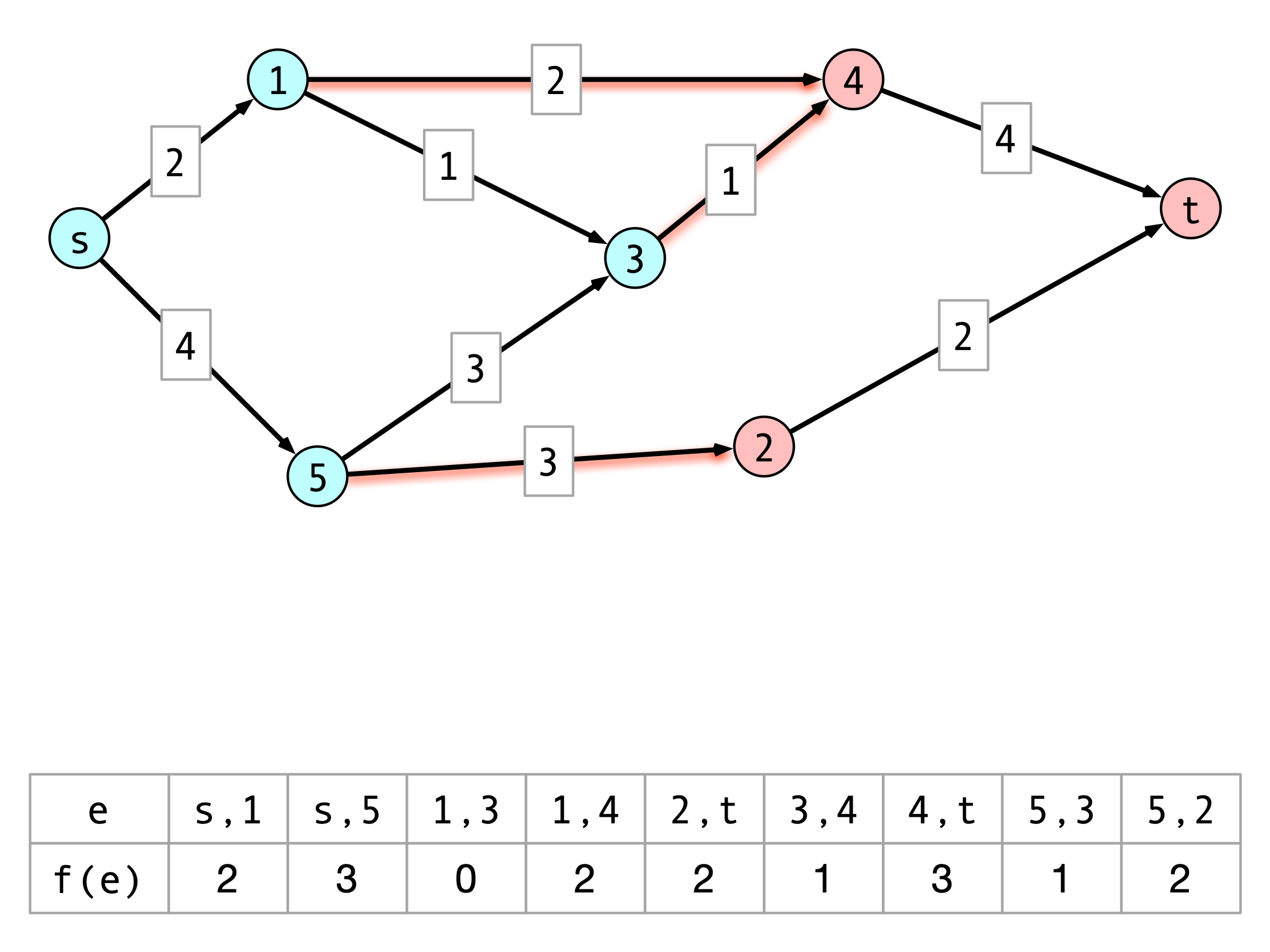
Correctness of Ford-Fulkerson
Idea. Relate values of flows to capacities of cuts:
- max flow = min cut
Outline:
- for any cut $(A, B)$, net flow across cut = value of flow
- $\implies$ max flow $\leq$ min cut
- if $f$ has no augmenting path in residual graph, then there is a cut with net flow = value of cut
- $\implies$ value of $f$ = capacity of cut
- $\implies \val(f) = \capacity(A, B) \geq $ min cut
Together these imply Ford-Fulkerson produces max flow
Max Flow/Min Cut Example
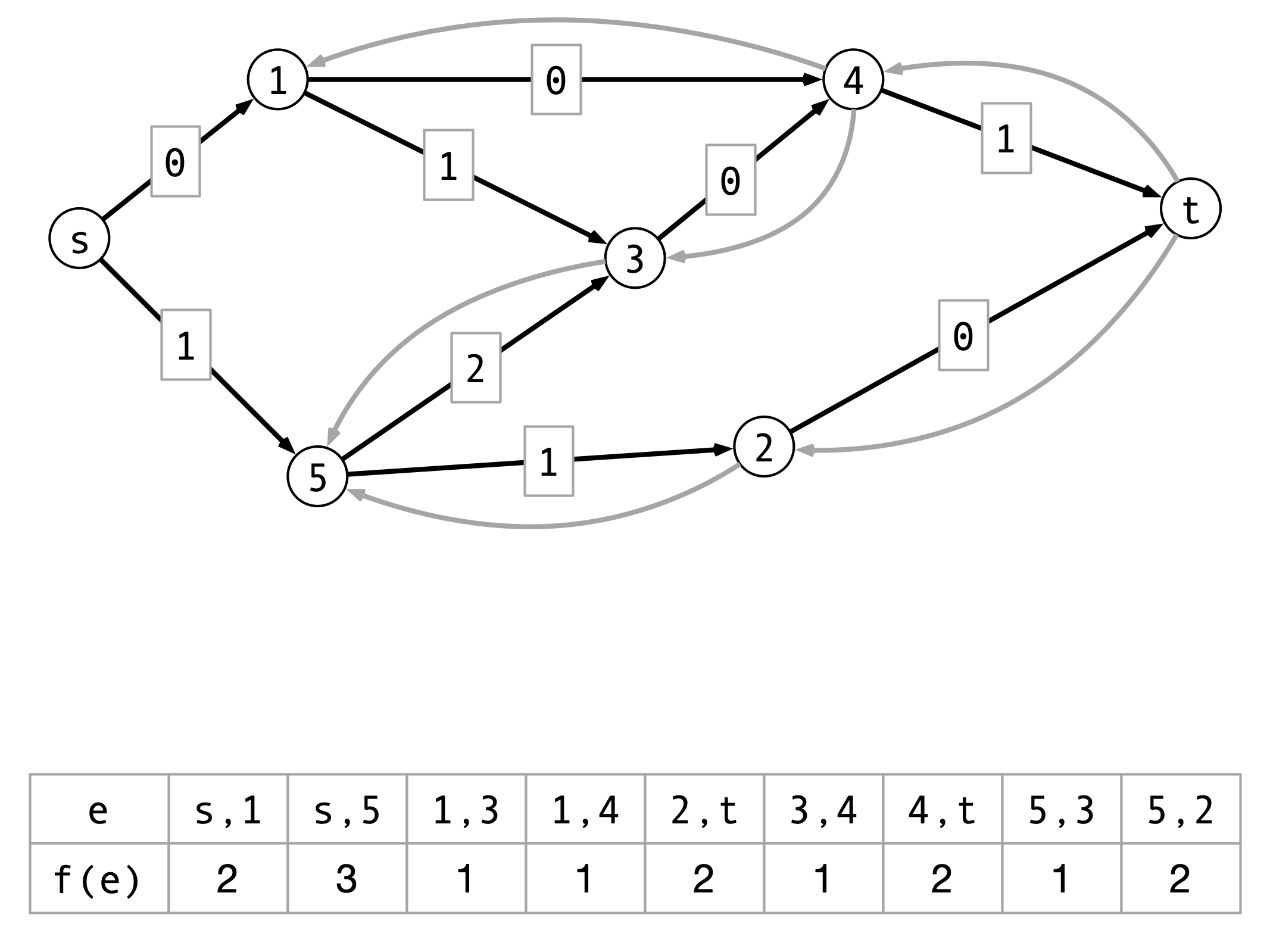
Claim 1
For any $s$ - $t$ cut $(A, B)$ and flow $f$, $\val(f) = f^{\text{out}}(A) - f^{\text{in}}(A)$
- $f^{\text{out}}(A) = $ flow out of $A$
- $f^{\text{in}}(A) = $ flow into $A$
Consequence. For all cuts $(A, B)$, $\val(f) \leq \capacity(A, B)$
Claim 1 Illustration
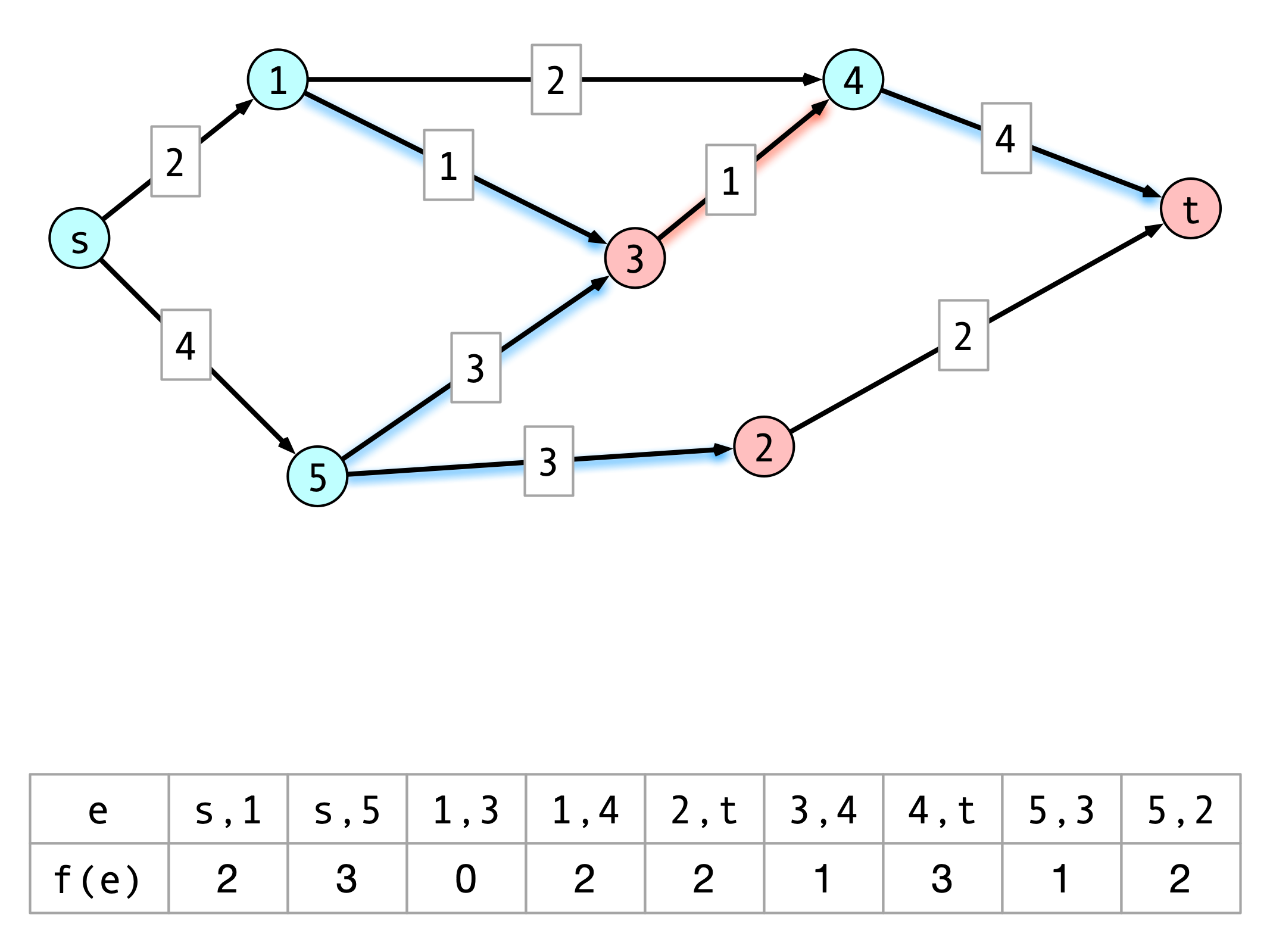
Claim 2
Suppose $f$ does not have an augmenting path in the auxiliary graph.
- $A^* = $ nodes reachable from $s$ in auxiliary graph
- $B^* = $ nodes not reachable
Then $\val(f) = \capacity(A^*, B^\star)$
Claim 2 Illustration
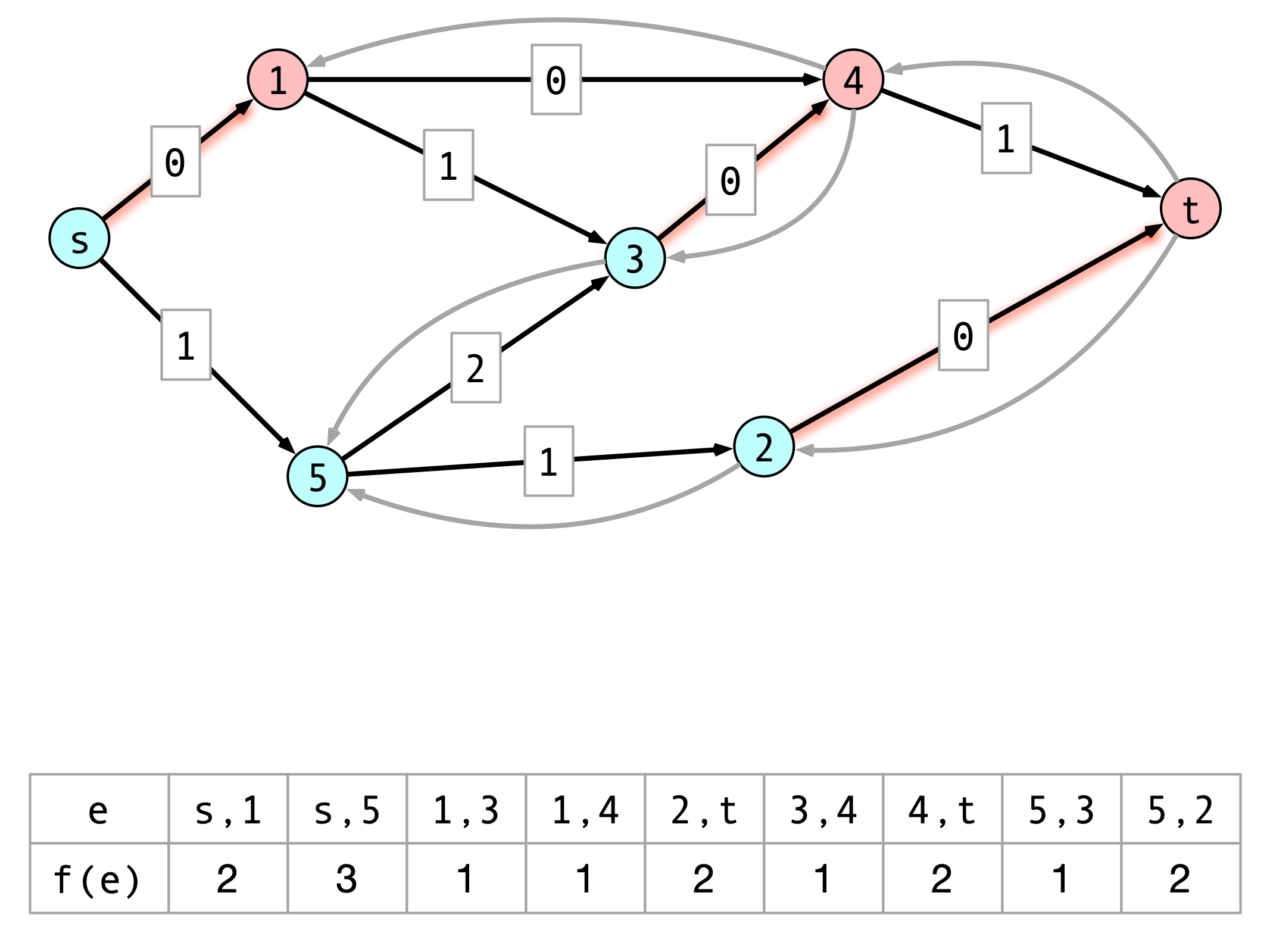
Correctness Follows
Consider flow $f$ found by Ford-Fulkerson.
- By claim 1, no flow can have value larger than any cut capacity
- By claim 2, $\val(f) = \capacity(A, B)$
These imply:
- $f$ is a maximum flow
- $(A, B)$ is a minimum cut
Conclusion
$G = (V, E)$ a weighted, directed graph with minimum cut capacity $C$.
Ford-Fulkerson finds maximum flow in time $O(C m)$.
- can be modified to find minimum cut as well
Next Time
- Midterm on Wednesday
- Stable Matching + Will’s research on Friday
- Reductions and NP completeness after break